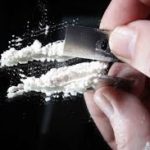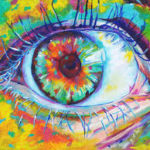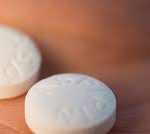We usually talk about addictions to substances (opiates, alcohol, whatever) or behaviours (gambling, porn, etc). But that misses the point. Addiction is entirely psychological, and I think it describes an attachment to a symbol that goes with the feeling provided by the substance or behaviour. The feeling and the symbol are coupled, bonded, and that’s a big part of what makes addiction so hard to beat.
Forget about “physical” addiction for now. I mean the withdrawal symptoms you get when you quit opiates. That’s not addiction; it’s chemical dependency. You also get withdrawal symptoms going off antidepressants or blood-pressure meds. And you don’t get any withdrawal symptoms quitting coke, meth, alcohol (unless you drink a huge amount) or, obviously, porn, sex, overeating, etc. You get psychological rebound, sure, but that’s not the same thing. It surprises me that people continue to confuse these different (but often overlapping) phenomena.
Once we see that addiction is purely psychological, we can break it down, and the categories most valued by psychologists are “cognition” (perceptions, thoughts, images) and “emotion” (feelings, urges, etc).
For some time now I’ve been thinking that the cognitive aspect of addiction is symbolic — entirely — it’s a representation of something. And the reason that symbol is so attractive, so strongly entrenched, is that it’s coupled with emotions like desire, excitement, pleasure, and relief (relief isn’t really an emotion; rather it’s the reduction of an emotion — generally anxiety). It is ALWAYS the case that cognitions and emotions hold each other in place. You think someone is blocking your goals, you feel anger: the anger highlights the image of this goal-blocking person, this shithead, and that image holds the anger in place. I’ve been writing about cognition-emotion coupling for decades….literally dozens of journal articles. But for now, let’s leave the academic abstractions behind and get down to lived experience.
 With addiction, you think this thing, this substance (let’s say a few lines of coke) is valuable and special. And you feel the excitement of anticipation — soon I’m gonna have some. Then you feel the buzz, and doesn’t that feel great? Which strengthens the image, the conception, that coke is valuable and special. See how the thought/image and the feeling (both before and during) fuel each other? Which is why it’s so hard to say No thanks, not tonight.
With addiction, you think this thing, this substance (let’s say a few lines of coke) is valuable and special. And you feel the excitement of anticipation — soon I’m gonna have some. Then you feel the buzz, and doesn’t that feel great? Which strengthens the image, the conception, that coke is valuable and special. See how the thought/image and the feeling (both before and during) fuel each other? Which is why it’s so hard to say No thanks, not tonight.
 So what does the addictive substance or act symbolize? To me, that’s the big question. The longer I practice psychotherapy with people in addiction, the more convinced I am that each person constructs his or her own scenario, vignette, drama, diorama — I don’t know what to call it — based on what went wrong or what went missing in childhood or adolescence. I introduced this idea last post, in terms of diving into the child self-narrative. Here I want to get into the details: what’s the narrative about?
So what does the addictive substance or act symbolize? To me, that’s the big question. The longer I practice psychotherapy with people in addiction, the more convinced I am that each person constructs his or her own scenario, vignette, drama, diorama — I don’t know what to call it — based on what went wrong or what went missing in childhood or adolescence. I introduced this idea last post, in terms of diving into the child self-narrative. Here I want to get into the details: what’s the narrative about?
Example: Helen says she can’t stop snorting coke. What does the coke mean to her? Through talking and remembering in therapy, we discovered that it means something similar to what cutting meant when she was about 12 years old. Her parents weren’t interested in her as a person. They wanted her to perform, be this charming, cute girl, be quiet and unobtrusive because Mom is trying to sleep — because she’s depressed, as usual. So they dismissed and scorned her spirited, creative, and needy self. Helen submitted to the good-girl role…and  she was achingly lonely. But when she went into her closet and cut little red lines in her forearm, she felt free, she felt vital, she was unobserved, she didn’t need or seek permission, she felt defiant, and most of all she felt in control of her own feelings. That’s what the cutting meant to her then. And that’s almost exactly what coke means to her now, decades later.
she was achingly lonely. But when she went into her closet and cut little red lines in her forearm, she felt free, she felt vital, she was unobserved, she didn’t need or seek permission, she felt defiant, and most of all she felt in control of her own feelings. That’s what the cutting meant to her then. And that’s almost exactly what coke means to her now, decades later.  She scampers into the bathroom, leaving the other ladies chatting over wine or coffee, and does a couple of lines. Again, she’s on her own, released, free, defiant, and in control of what she’s feeling. Now take that symbolic scenario she’s created, and graft it onto the feeling of the anticipation and then the feeling of the rush itself. That cognition-emotion linkage has been reinforced thousands of times. It’s not going to go away easily.
She scampers into the bathroom, leaving the other ladies chatting over wine or coffee, and does a couple of lines. Again, she’s on her own, released, free, defiant, and in control of what she’s feeling. Now take that symbolic scenario she’s created, and graft it onto the feeling of the anticipation and then the feeling of the rush itself. That cognition-emotion linkage has been reinforced thousands of times. It’s not going to go away easily.
Behavioural addictions like gambling and porn are no different. I’m the cocky guy who just might win big tonight, and won’t everyone be impressed. They’ll look at me with boundless envy and admiration (like they should have back in high school) as I strut down the corrdior  with my armful of chips. Now couple that image with the sheer excitement of not knowing how the next hand will turn out. (That’s a big deal for gamblers.) The image and the feeling fuse — possibly forever.
with my armful of chips. Now couple that image with the sheer excitement of not knowing how the next hand will turn out. (That’s a big deal for gamblers.) The image and the feeling fuse — possibly forever.
By the way: the feelings of excitement, defiance, energy, etc, that I’ve described so far have everything to do with dopamine. Maia Szalavitz calls it the thrill of the hunt. And what’s going on at the brain level is this: your nucleus accumbens and amygdala are stoked up on dopamine, so their connections with “association cortex,” where memories converge into vignettes and fantasies, form deep ruts…and those connections get strengthened every single time they get reactivated.
 A couple of my clients have combined drugs, sex or sexting, and/or porn into this incredibly artful (what else to call it?) ritual — a scenario in which they are desirable, desired, potent, free, and safe. The experience they’re addicted to is basically a fantasy of being both very good and very bad, nasty and safe at the same time — the dream fantasy of a child or young teenager. But here’s the thing: the components — the coke and the porn for example — are only valuable in how they contribute to this symbolic amalgam. What each offers, without that symbolic currency, is almost nothing at all.
A couple of my clients have combined drugs, sex or sexting, and/or porn into this incredibly artful (what else to call it?) ritual — a scenario in which they are desirable, desired, potent, free, and safe. The experience they’re addicted to is basically a fantasy of being both very good and very bad, nasty and safe at the same time — the dream fantasy of a child or young teenager. But here’s the thing: the components — the coke and the porn for example — are only valuable in how they contribute to this symbolic amalgam. What each offers, without that symbolic currency, is almost nothing at all.
I’ll end with one last example: my own. I recently developed a painful condition called sciatica, and I’ll probably need lumbar spine surgery in a couple of months to carve away the bone that’s squeezing my sciatic nerve. Don’t worry about me: this surgery is extremely low-risk and has very high success rates. I look forward to getting it done. But meanwhile the pain is…well…painful.
 So I’ve got a prescription for some pretty powerful opioids. And as soon as I pop one or two, the whole symbolic vignette from my days of addiction returns. I get to make myself warm and safe, I get to be taken care of, like when I was sick as a child — come here, Mommy, I need you — and I get to control all that with
So I’ve got a prescription for some pretty powerful opioids. And as soon as I pop one or two, the whole symbolic vignette from my days of addiction returns. I get to make myself warm and safe, I get to be taken care of, like when I was sick as a child — come here, Mommy, I need you — and I get to control all that with  these little objects — the pills — which are mine! (particularly handy if Mom isn’t feeling very connected). That symbolism is so much more powerful than the feeling the drug provides. Yet the drug does provide a feeling…a warmth in my stomach, a vague but familiar sense of pleasure. What I’m saying is that this feeling is pretty nice (though I know it will collapse into boredom soon enough), but its power lies in how it holds the symbolic scenario in place.
these little objects — the pills — which are mine! (particularly handy if Mom isn’t feeling very connected). That symbolism is so much more powerful than the feeling the drug provides. Yet the drug does provide a feeling…a warmth in my stomach, a vague but familiar sense of pleasure. What I’m saying is that this feeling is pretty nice (though I know it will collapse into boredom soon enough), but its power lies in how it holds the symbolic scenario in place.
I’m not worried about becoming addicted again. I’ve had three surgeries in the last decade (I’m actually incredibly old and held together by screws and picture wire). I went on and then off painkillers each time. I recognize the childhood fantasy, tailored, perfected, by years of efficient drug use. I recognize the feeling. Nice, but, as feelings go, if there were nothing else to it, I might prefer a back rub or foot massage. And I’m pretty much past being a slave to my attractions. I’ve had nearly forty years free of addiction.
 But man, do I ever get what it’s like, for my addicted clients, and for almost anyone fighting that so-powerful amalgam of thought and feeling: the fabricated scene, the sense of completeness, the revised reality, and the control you take (or at least hope for) — an entrenched (but fantasized) improvement over what it was really like to be young and scared, alone and helpless.
But man, do I ever get what it’s like, for my addicted clients, and for almost anyone fighting that so-powerful amalgam of thought and feeling: the fabricated scene, the sense of completeness, the revised reality, and the control you take (or at least hope for) — an entrenched (but fantasized) improvement over what it was really like to be young and scared, alone and helpless.
…………..
Please think of attending this one-day conference on novel and progressive ways to conceptualize addiction, highlighting harm reduction (and, in general, compassionate) approaches. It’s called Shifting the Addiction Paradigm. It will be presented by The Center for Optimal Living and partners, at the New School, New York City, June 7th. I’ll be a keynote speaker.
………….
ALSO PLEASE NOTE: The bug that was trashing some of your comments is now fixed. Please comment!

Leave a Reply to Colin Brewer Cancel reply